
Fine Classical, Instrumental, and Specialty Recordings
Label: Soundset Recordings Item Number: SR1024 Format: CD Year Recorded: 2007 Wapango Santa Fe Guitar Quartet Christopher Dorsey - Guitar Mariano Fontana - Guitar Miguel Piva - Guitar Eric Slavin - Guitar
Santa Fe Guitar Quartet 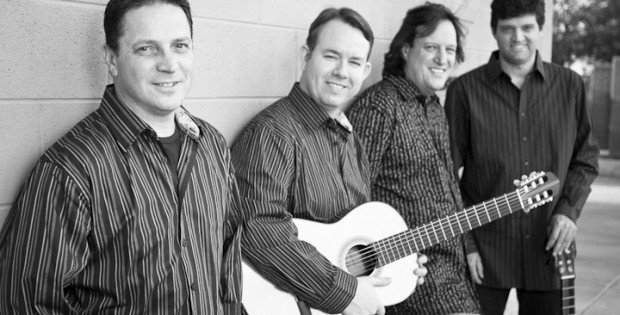 The Santa Fe Guitar Quartet (SFG4), from Santa Fe, Argentina, is an innovative guitar ensemble whose repertoire ranges from Baroque works to modern tangos. The group is strongly committed to the performance of Latin American music, having presented exciting new works to a large audience worldwide. Their full sound is similar to a small string orchestra and was praised by the Washington Post as "big, warm, round and clear." The quartet's addition of the six-string contrabass along with the occasional use of other instruments and percussive effects broaden the range and sound palate of the typical guitar ensemble. Combining the individual talents of two Argentineans and two North Americans, the group has been touring internationally since 1989, both in recital and with orchestra. The Santa Fe Guitar Quartet has performed for sold-out houses throughout North and South America including Lincoln Center and Weill Recital Hall at Carnegie Hall. The Organization of American States, Partners of the Americas, Mid-America Arts Alliance, Community Concerts, Texas Commission for the Arts, and Allied Concerts have all sponsored the quartet in the United States. In 1997, the Argentinean Institute for Excellence (Instituto Argentino de la Excelencia) awarded the Santa Fe Guitar Quartet the prestigious First Prize of Excellence. The ensemble's recordings continue to receive enthusiastic reviews throughout North and South America, Europe, and Asia. Their latest recording, a collection of music representing the diverse expression of composers living throughout the Americas, further demonstrates that the Santa Fe Guitar Quartet is a living example of the merging of the Americas through music. Christopher Dorsey - Guitar 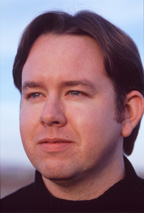 Chris Dorsey was born in Byron, Georgia. He received his BA with John Pell at Belmont University and his MA with William Yelverton at Middle Tennessee State University. Under the direction of Frank Koonce, Chris received his Doctor of Musical Arts in guitar performance from Arizona State University in 2005. The title of his doctoral dissertation is Guarango como guitarra en tango [Awkward as a Guitar in the Tango]: The Rise, Fall, and Rebirth of the Guitar in the Argentinean Tango. In 2000, the ASU College of Fine Arts and the "Friends" of the ASU Center for Latin American Studies awarded Chris grants to study tango in Buenos Aires, Argentina, where he studied with guitarist/composer Hugo Romero. Chris has studied the Suzuki approach with Frank Longay and currently teaches music and guitar at his private studio in Phoenix, Arizona. For more information, please visit www.chrisdorseyguitar.com Mariano Fontana - Guitar 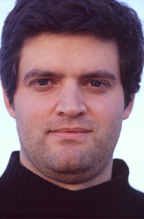 Born in Rosario, province of Santa Fe. At the age of eleven was introduced to the traditional rhythms and harmonies of argentinian folk music and Beatles songs by his ancle "Caco" (who is an amatteur guitarist). Later on he took lessons on theory and solfeggio with Daniel López and on interpretation with Roberto Lovrincevich. During those years he accompanied poetry readers and appeared on different radio and TV shows as a soloist. After having obtaining his degree in Law (though he never worked as a lawyer) he settled down in the city of Santa Fe to study chamber music and guitar with Néstor Ausqui. Ausqui, who was disciple of the great uruguayan maestro Abel Carlevaro, introduced him to Carlevaro's "Technic School" as well as Guido Santórsola's "Harmony applied to the guitar". Miguel Piva - Guitar 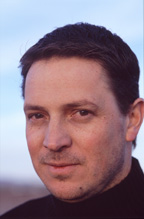 Miguel Piva was born in Santa Fe, Argentina. In 1990, Piva was a first prize recipient in Argentina's Mozarteum Guitar Competition. He has developed a wide range of special effects and percussive techniques that are essential for projecting the special character of Latin American guitar music. Piva studied at the Universidad Nacional del Litoral and worked with Guido Santorsola in the analysis of guitar quartet repertory. He has also studied guitar technique and interpretation with maestros J. Manuel Echagüe and Eduardo Isaac. He has participated in numerous master classes worldwide and has performed on several occasions for the Uruguayan maestro Abel Carlevaro. Piva is also a devoted researcher of the music of Astor Piazzolla. When not touring with the SFGQ, Piva conducts the Santa Fe Choir in performances of sacred and secular works. Eric Slavin - Guitar 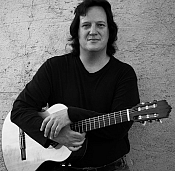 Eric Slavin was born on a United States Marine Base in Hiroshima, Japan. He is a bilingual (English and Spanish) professional guitarist and teacher. He comes from a musical family, and his grandmother, Elena Slavnaia was a celebrated soprano singer who sang at the Steinway Concert Hall in 1931. Eric's musical aspirations started as a child studying piano under the Hungarian pianist, Agi Rado. He later studied guitar and music most notably in Washington, D.C. under John Marlow, Jerzy Sapieyevski and Haig Mardirosian. In 1988 he was an intern with Hector Villa-Lobos in Rio de Janeiro, Brazil. There he met world-class guitarist, Miguel Piva from Argentina and in 1989 he moved to Santa Fe, Argentina. In the ensuing years he had the privilege to study with the most famous Latin American pedagogues and composers such as Abel Carlevaro and Guido Santorsola. Slavin also became a founding member of the award-winning Santa Fe Guitar Quartet. When he is not touring or recording, Eric Slavin is a much sought-after guitar teacher who in the last twenty years has taught numerous master classes, and has been on staff at both El Paso Community College and El Paso Conservatory of Music, El Paso, Texas. Slavin is a graduate of the American University, Washington, D.C. and has a Masters of Music from New Mexico State University. Eric Slavin, in addition to his quartet work, performs as a solo guitarist and is available for concerts, special events, and fundraisers. His first solo CD Serenade (UR Music 2009) includes the music of Ralph Towner, Walter Heinze, Jose Luis Merlin and Philip Rosheger. Born on the island of Cuba in 1937, Paquito D'Rivera began his career as a child prodigy,playing both the clarinet and the saxophone with the Cuban National Symphony Orchestra. Since his defection from Cuba, Paquito D'Rivera has taken command of his role as a cross-cultural ambassador, creating and promoting a multinational style that moves from Bebop to Latin to Mozart. Throughout his career in the United States, Europe, Asia, and Latin America, D'Rivera's works have received rave reviews from the critics. D'Rivera has received many awards, including six Grammys, and his discography includes over 30 solo albums in jazz, bebop, Latin music, and classical music. In his quest to bring the Latin repertoire into the forefront of the classical arena, Paquito has successfully created, championed, and promoted all types of classical compositions. In addition to his extraordinary performing career as an instrumentalist, Paquito D'Rivera has rapidly gained a reputation as an accomplished composer. His works often reveals his versatility and widespread influences, which range from Afro-Cuban to the dance hall, to influences encountered in his many travels, and back to his classical origins. In "Wapango," D'Rivera turns to the lively spirit and the rich rhythm of the Mexican couple dance called huapango, imaginatively balancing the fundamental relationship between the traditional and the new. His "Danzón" is based on the Cuban danzón, which evolved in the 1870s from the contradanza, becoming a distinctive creole blend of African rhythms with melodic elements drawn from the European country-dance. The rubato introduction of "Danzón" sets a romantic atmosphere followed by the danzón proper in clave, the rhythmic foundation of almost all Cuban music. Finally, the "Vals Venezolano" honors Antonio Lauro, Venezuela's most famous composer, in a lively, syncopated waltz. Marcelo Coronel was born in Buenos Aires, Argentina, in 1962. He formalized his musical education the School of Music at the National University of Rosario. His main creative pursuit lies in the preservation and evolution of the folk music tradition. This can be understood as applying non-traditional musical language to the traditional rhythm, harmony, and melody of folk forms. Marcelo Coronel lives in Rosario (province of Santa Fe), where he divides his time between composing, performing, and teaching. "Germinacíon" is a chaya, a style of music from the province of La Rioja. The chaya is similar to the cueca from the neighboring region of Cuyo. The title expresses the happiness of a love that matures and engenders new life. "Como un camino largo" is a zamba, a couple dance that came many years ago from Peru to what is now Argentina. The zamba is one of the most common song forms of Argentinean folk music, and its dance represents the intention of a man to gain the love of his partner. The mood of the zamba can vary in terms of the speed: there are fast, festive zambas and also the slow, nostalgic zambas. This piece is the latter. "A la fuerza" is based on the gato, another couple dance, which is practiced in the central and northwest of Argentina. This gato shows a rhythmic characteristic that can be heard in various styles of the Latin-American folk music""the coexistence of 6/8 and 3/4 measures""which makes for a very interesting polyrhythm. The revision of this piece for a planned recording turned out to be somewhat complicated, and the composer finished it "a la fuerza" ("struggling")""hence the title. Tango was the rage of Europe and America soon after World War I and was undistinguishable from the popular dance of the same name. This aggressive yet passionate tango, begotten in the brothels of turn-of-the-century Argentina and raised in the dance halls of Paris, became a quick, easy victim of parody. Tango became passé. In the mid-1950's, however, Argentinean composer Astor Piazzolla (1921-1992) began revolutionizing the tango. He created the Nuevo Tango by adding elements of dissonance, chromaticism, rhythmic complexity, and jazz. Piazzolla received death threats from Argentinean "nationalists" and tango purists in response to his radical treatment of the tango. Only recently has his music become accepted, both in Argentina and also in concert halls throughout much of the world. Piazzolla began writing Las cuatro estaciones porteñas [The Four Porteño Seasons or Four Buenos Aires Seasons] in 1965 and finished the suite in 1970. Originally written for his quintet of violin, bandoneón, electric guitar, piano, and contrabass, Las cuatro estaciones porteñas has become one of his best-known works. Piazzolla pays homage to the tango of Buenos Aires as well as the "serious" music of the great Italian composer Antonio Vivaldi. Vivaldian traces are most obvious in the closing bars of "Invierno porteño," and a fugue-like section begins "Primavera porteña." With a breath of Nuevo Tango, Piazzolla gives new life to traditional classical forms.
Label: Soundset Recordings Item Number: SR1024 Format: CD Year Recorded: 2007 "As guitarists, they are about as good as you can get...they play like angels." The Washington Post "Yet another set of three 'flirtatious dances' by the fascinating Marcelo Coronel proved to be the most demanding yet rewarding of the evening. In particular 'Gato' was passionate and deep; played perfectly by the guitars matching up in pairs, one set going note by note and the other providing lines in which the melody traveled." -The Cerritos Ink "Ever since somebody held Orpheus' stringed lyre against a resonating board, ladies and the rest of us have been seduced by men who play guitars . . . So imagine the effect of four such masters of guitar eliciting the dancing, romantic heart of South American music in the vaulted sanctuary of Church of the Holy Cross on the afternoon of February 5." -The Kingston Daily Freeman "From Heaven by way of Santa Fe" "As guitarists, they are as good as you can get...they play like Angels" -The Washington Post "Each is a solo virtuoso on the guitar, but together, they produce an ensemble sound that is superb in blend and balance, rhythmically precise and, above all, musically wonderful." -Rapid City Journal "The Santa Fe Guitar Quartet proved to be a laid-back group with a strongly lyrical approach to music... Some of these haunting sounds lingered long in the memory." -Dallas Morning News "The SFGQ have found a new and attractive repertory which they perform with devotion, authenticity and remarkable precision." -SOUNDBOARD/Journal for the Guitar Foundation of America "Their musicianship is first rate...For those who value laid-back competence,the evening proved to be a rewarding success." -St. Louis Post-Dispatch | |||||||||||||||||||||||||||||||||||||||||||||||||||||||||||
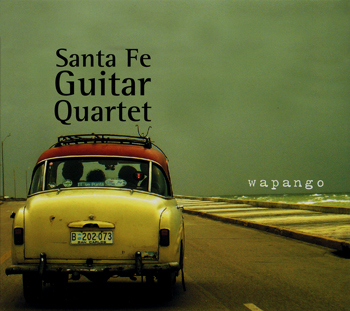
 Amazon
Amazon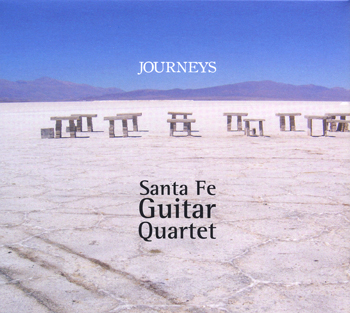
 Follow Us on Twitter
Follow Us on Twitter Follow Us on Instagram
Follow Us on Instagram Visit Our Partner Soundset Recordings
Visit Our Partner Soundset Recordings